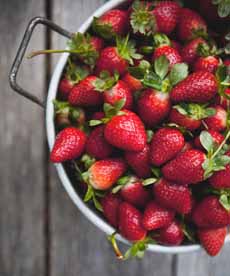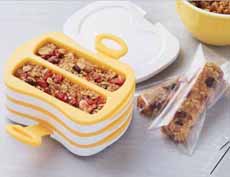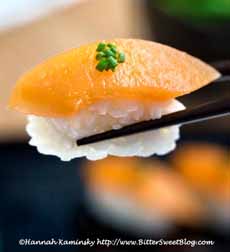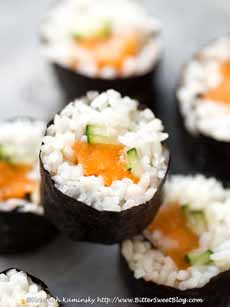|
Frittatas and stratas are dishes that work for breakfast, lunch or dinner.
They’re egg-based dishes similar to an omelette or a crustless quiche, incorporating meat or seafood, cheese, and/or vegetables.
The word frittata means “fried” in Italian, and frittatas are typically made in a skillet. But when we drilled down into this recipe, which was called a frittata, we found that it is baked, not fried.
This engendered an office discussion:
Is it a frittata? No: Frittatas are fried in a skillet.
Is it a crustless quiche? No: Quiches are a custard made with milk or cream.
Is it baked eggs? No. Baked eggs are a simple dish. Like poached eggs, they can be garnished, but they aren’t a mixture of ingredients.
Is it a strata? Yes. Strata is a layered casserole, often with bread, egg and cheese layers plus breakfast meat, seafood or vegetables. The fact that this recipe is made in a tart pan instead of a casserole dish is form, not function.
This week we purchased a pound of Kurobuta/Berkshire bacon from Snake River Farms, along with a bunch of spring asparagus. So we thought: for dinner, an asparagus-bacon strata and a mesclun salad with Dijon vinaigrette.
ABOUT KUROBUTA PORK
Kurobuta is the Japanese name for the Berkshire breed of heritage pig, considered the top-quality pork. While all Kurobuta is Berkshire pork, not all Berkshire pork is Kurobata grade.
We are big fans of Snake River Farms’ Kurobuta pork products. The hams are the best we’ve ever had; ditto for the pork roasts.
This was the first time we’ve purchased the Kurobuta bacon; and while it costs slightly more than premium brands like Applegate (currently $14.66/pound on the company website), it was worth it.
The thick-cut bacon is lightly cured and naturally smoked over hard wood, and there is mild sweetness to the meat in addition to bacon’s saltiness and smoke. Our only regret was that we didn’t buy more of it.
RECIPE: ASPARAGUS-BACON STRATA
This inspiration for thus recipe comes from Fresh Planet Flavor, which lauds it for being seasonal, quick/easy, low-carb and nutrient-dense.
They recommend pastured eggs, from hens that spend most of their lives foraging outdoors. Pastured eggs are significantly higher in vitamin E than conventional eggs, and have more than double the beneficial omega-3 fatty acids (source).
Prep time is 30 minutes, cook time is 40 minutes. Fresh Planet Flavor suggests that you can prepare the bacon the night before and store it in fridge.
We adapted the original recipe by adding extra ingredients to turn it into a true layered strata.
Ingredients
5 slices of bacon
1 bunch of asparagus
8 eggs
5 cherry or grape tomatoes, halved
Salt and pepper to taste
|
|

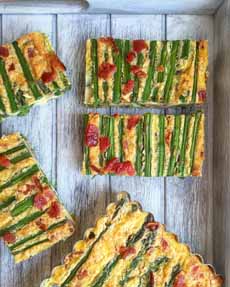
[1] and [2] Asparagus-bacon frittata made in a rectangular fluted tart pan. You can make it in a round pan or a skillet (photos courtesy Fresh Planet Flavor).
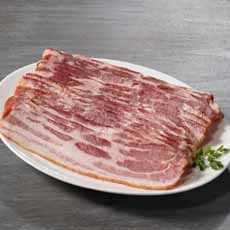
[3] Kurobuta bacon from Snake River Farms.
|
|
Optional: 1 tablespoon minced fresh herbs of choice (basil, chervil, chives, cilantro, dill, oregano, parsley, sage, tarragon, thyme)
Optional: 1/3 cup shredded Gruyère or Swiss cheese
Preparation
1. PREHEAT the oven to 350°F. Cook the bacon slices in a large dry skillet over medium heat until brown and crisp, approximately 6 minutes per side.
2. REMOVE to a paper towel-lined plate to drain. Use a teaspoon of the bacon fat from the skillet and a piece of paper towel to grease the inside of the tart pan.
3. TRIM the woody ends of the asparagus, and cut into 1″ pieces, reserving a handful of uncut stalks to decorate the frittata’s top. Arrange the asparagus pieces in the bottom of the tart pan. Crumble three of the bacon slices on top of the asparagus, followed by the optional shredded cheese
4. WHIP the eggs until foamy along with salt and pepper, then pour over the asparagus and bacon. Arrange the uncut asparagus stalks lengthwise on top of the frittata partly submerged in the egg, along with the optional cherry tomatoes. Crumble the remaining two pieces of bacon on top of the asparagus stalks.
5. BAKE the frittata for 40-60 minutes, until it is firm and browned on top. Allow to cool enough to touch, then remove from the pan by pushing the bottom of the tart pan up through the sides. If the frittata sticks, cut along the perimeter and then crossways into slices, and use a spatula to lift up the slices.
Frittata is equally delicious warm or at room temperature, and like leftover pizza, the leftovers are good straight from the fridge.
|


